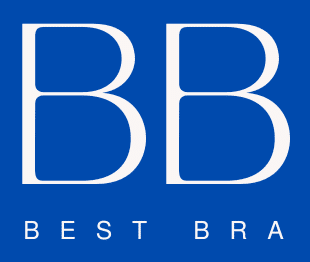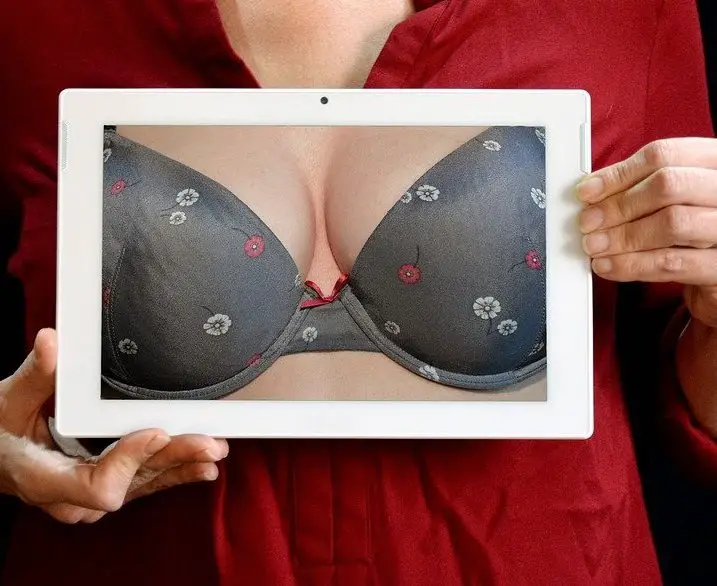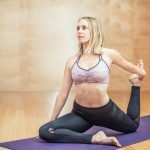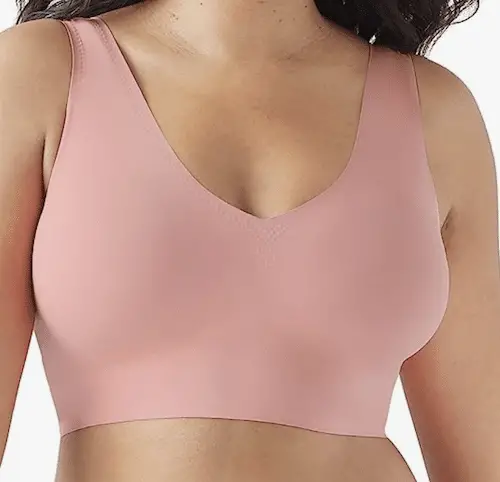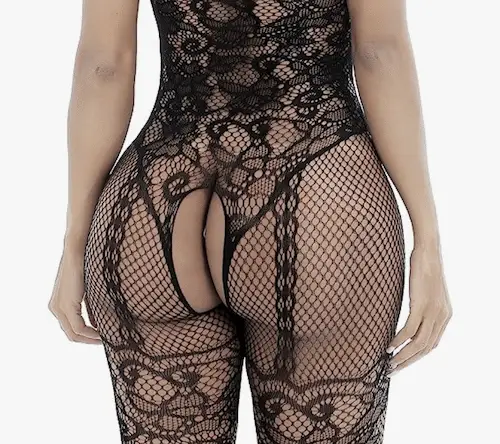Table of Contents
Wearing a bra style that fits correctly may not be a common topic of conversation, but everyone can benefit from having one that fits well. A poor-fitting bra is uncomfortable and may cause backache, pain in your shoulder blades, or even headaches.
If your breast tissue feels painful and tender the day after you have been wearing a poorly fitting bra, a too-small cup size or bands that are too tight could be at fault. For younger girls who have started to menstruate and for older women whose bodies are changing during pregnancy and menopause, it’s particularly important to wear a supportive bra style so as not to suffer unnecessary discomfort.
Choosing the right bra is an essential part of a woman’s wardrobe. It not only provides support, but also enhances the overall appearance of a woman. A poorly-fitting bra can cause discomfort, back pain, and even lead to poor posture. In this article, we will discuss the basics of bra fit, including different types of bras and how to measure for the perfect fit.
Types of Bras
There are many different types of bras available on the market, each designed for a specific purpose. Some of the most popular types include:
- T-Shirt Bras: These bras are designed to be worn under tight-fitting clothing and are seamless, making them ideal for everyday wear.
- Push-Up Bras: These bras are designed to lift and enhance the appearance of a woman’s cleavage. They are often padded or have built-in padding.
- Sports Bras: These bras are designed to provide support during physical activity. They are often made of moisture-wicking material and have wider straps for added support.
- Strapless Bras: These bras are designed to be worn without straps, making them ideal for off-shoulder tops and dresses.
- Plunge Bras: These bras are designed to provide a low-cut neckline, making them ideal for low-cut tops and dresses.
Measuring for the Perfect Fit
Measuring for the perfect bra fit is an essential step in ensuring comfort and support. To measure for the perfect fit, follow these steps:
- Measure the band size: To measure the band size, wrap a measuring tape around the ribcage, just below the bust. Make sure the tape is level and snug, but not too tight.
- Measure the cup size: To measure the cup size, wrap a measuring tape around the fullest part of the bust. Make sure the tape is level and snug, but not too tight.
- Calculate the cup size: Subtract the band size from the cup size. The difference will determine the cup size.
Example:
- Band size: 32 inches
- Cup size: 36 inches
- Cup size: 36-32 = 4 inches (which is equivalent to cup size D)
How do I know if my bra fits? Bra fit tips.
The best way to tell if your bra is supporting you is to check if your breasts feel weightless, allowing you to move comfortably without feeling as though they are jumping out of your bra. If you notice that the shoulder straps dig into your skin or breast tissue bulges above or below the cups, it’s time to invest in a well-fitted bra. Wearing the wrong size bra is usually uncomfortable.
If you’re uncertain about how to measure yourself for a correct fit, pull on a good quality tape measure and follow these instructions:
Finding a perfect fitting bra starts with Bra fit tips
Measuring
Measure around your rib cage just under your breasts; this is your band size. Next, measure around the fullest part of your bust; this number will be one cup size larger than your band size; remember that cup sizes are not equivalent across different brands so try on several bras until you find one whose fit is comfortable and flattering.
If you are wearing a size 36C bra, for example, and it’s too tight in the band but fits well in the cup, try a 36D bra instead. After determining your band size and cup size add five inches to your bust measurement for your new underbust measurement; this will give you an idea of what your new bra sizing should be.
To convert your current bra size to one that offers greater support follow these instructions: subtract four from the band number (e.g., if you measure 34inches around at the rib cage) and deduct two from the cup number (e.g., if you measure 34 inches around at the fullest part of the bust).
The result is your converted band size (e.g., 32) and your converted cup size (e.g., B). This number (32B) is the recommended band size for a bra that offers greater support to many women with larger busts and will keep them from bouncing around at unwanted times.
To ensure the correct fit, bras should be tried on before they are purchased; if possible go to a lingerie boutique or a department store’s lingerie section where you can get expert advice on choosing the right size.
Pay special attention to the shoulder straps: if they dig into your skin or leave red marks it means that either you need a tighter bra or one that provides more coverage in the back of the bra because your breasts are too large for its cups.
Sports bra sizes
Sports bra sizes are equivalent to band size and cup size; for example, a 34 C sports bra is equivalent to a 32 B cup regular bra. Because the purpose of a sports bra isn’t to lift breast tissue but rather to keep them from bouncing while exercising, most women find that they can wear their regular bra sizes when working out as long as the shoulder straps are removed or adjusted in order to make it more comfortable during physical activity.
Calculate your bust measurement:
For this, you need a soft measuring tape – NOT one with metal (it bends easily) – and two blouses or bras that fit well. Measure under your armpits around the fullest part of your breast; now subtract this number from your chest measurement which you can get by putting on a blouse or bra and measuring around your chest when it is covered.
For example, Your underbust measurement comes up to be 35inches. Your chest measures 34inches with a good fitting bra on. This means that you have a 1-inch difference between your bust and your chest measurements; this is most likely due to the fact that your cup size is too small for you, so try getting a bigger size or use breast enhancers such as push-up bras that are padded and designed with larger breasts in mind.
I need a new bra, what bra do I need?
The type of bra you need depends on your lifestyle. A leisure or all-purpose bra offers light support and is most often made of a soft fabric that won’t add bulk under clothes.
These bras are often wire-free so as not to show through thinner fabrics such as silk and cotton, but they may have elastic straps for added comfort. If you prefer to wear tighter fitting clothing an underwire bra is a good choice; it can also be used during exercise because its tight band helps reduce breast tissue bounce.
Sportswear manufacturers have designed special sports bras that provide greater support while allowing freedom of movement.
To avoid chafing in the back some models come with a D-ring between the shoulder blades to help prevent the bra from riding up.
Cotton, nylon, and cotton-blend fabrics are popular undergarment materials; however, bras made with these materials don’t offer much support because they lack structural elements.
Bras made of lace can be very pretty but unless they are covered in a netting the chances of them showing through your clothes is high.
Adjustable bra straps or convertible bras with multiway bra straps that can be changed to crisscrosses and halters provide extra support for women who have limited hand movement and need to wear their bra 24 hours a day.
Some women prefer wearing different types of bras at different times: sports models while jogging, leisure bras at home or work, and special occasion or underwire models while going out. Bras should also be replaced every six months to a year because after this time elastic loses its resiliency and the cups may become misshapen or stretched out.
Clinical studies have shown that wearing a bra five days a week extends the life of the breasts, which are made up of fatty tissue that can feel like firm balloons if left unsupported.
The standard advice is that women with smaller busts shouldn’t wear bras but there is debate on whether this is necessary for larger busted women as well.
While some physicians recommend wearing bras twenty-four hours a day, others argue that not wearing one at night helps reduce breast pain caused by sleeping in an unnatural position and possibly even leads to fewer wrinkles around the upper torso area.
Whatever your philosophy on bras, if you do decide to wear one they should always be worn the same way to ensure proper support.
Types of Bras:
Leisure Bra:
For women with small busts, this style offers light support and can be worn under clothes made from thin fabrics such as silk or cotton as well as sleepwear. Leisure bras are often convertible and may have removable straps.
They also come in a variety of colors and patterns. Fashion-conscious women will go for models that look like ordinary tops instead of traditional bra shapes. The average woman needs at least two leisure bras; one for around home and the other for when it’s time to go out again.
[amazon box=”B07QPRBPPD”]
Workout Bra:
Designed specifically for aerobic exercise these bras offer moderate support by using both compression and encapsulation to reduce breast bounce.
Workout bras are often made of a stretchy material that won’t rub or chafe the skin and may have double straps in the back for added stability; however, you need to make sure they don’t dig into your shoulders because this can cause soreness afterward.
[amazon box=”B016MM2390″]
Nursing Bra:
Made of soft, flexible cotton or microfiber fabric these bras provide comfort while being easy to fasten and unfasten. They come with removable cups so they can be used as leisure bras after nursing is over. Special Occasion/Underwire Bras:
These pretty bras offer extra support but also restrict movement by acting like a corset when worn during exercise or under tight-fitting clothing. Some women prefer wearing underwire bras all the time because they’re more comfortable than other styles.
[amazon box=”B07RNPBQH5″]
Sports Bra:
The best sports bras have a compression band under each breast to reduce movement during exercise and double straps in the back for extra security; however, some women don’t like wearing these models at all.
This is especially true if you don’t feel very secure with yourself or have very large breasts. Some sports bra manufacturers recommend matching them with your regular clothing size; but others say that this may mean buying a model that’s too big and doesn’t offer enough support for vigorous exercise.
You may be better off trying on several different sizes before making a decision so the cups fit snugly while being soft and stretchy against your rib cage.
[amazon box=”B071Z8Q9YL”]
How Bras Are Measured:
Bras are usually sized from 28 to 56, where the inch size is based on the number of inches around your rib cage under your breasts. The band measurement goes up in even numbers and cup sizes go up in odd numbers; for example, a woman with a thirty-four-inch rib cage would probably wear a size 36D bra.
Manufacturers also use letters like A, B, or C to mean that you are small (or medium) busted while other models may be labeled as a petite or full figure. This system isn’t too accurate because it’s possible for two women with the same measurements to have different bust sizes that require a different cup size for properly fitting bras.
Some European designers have come up with their own sizing systems that go from AA to O. However, it’s difficult to come up with an international standard that works for everyone, and the issue of cup size being linked to bust size is still a matter of controversy.
What type of bra band should I choose?
Underband and Straps:
Bras have two types of materials for the band they’re made with. One type is held together with elastic while the other has metal sewn into it.
Elastic bands are comfortable but not very supportive by themselves so you should be sure to get a size that’s snug enough to stay in place but not bite into your skin. They usually go up in even numbers from 28 to 40 inches and can be difficult to deal with if you have thin shoulders or a small frame.
Silicone straps are another option that offers more support than elastic ones, particularly under heavy breasts. However, these will slip off if they’re too loose because silicone doesn’t stretch as elastic does. Double-strap bras sometimes feature bra straps that are made of both materials, so they’re more secure than straps made from elastic only.
How do you know your bra is too small?
You know your bra is too small if you can fit more than two fingers under the band. If this happens, not only will the bra be uncomfortable but it will leave unsightly red marks on your skin in between wearing it.
What type of breast shape do I have?
Women with an even-shaped bust that measures neither very full nor droopy may need a bra with padded or molded cups. Women who have smaller breasts and fuller figures usually prefer molded cups because they make their bust line appear larger while providing more lift and support. Molded cup bras often come in A, B, C, D, DD and G sizes where G is the largest size available made for women with extremely large breasts.
Even-shaped breasts are best supported by bras that offer wide-set straps with wide-set center panels. These are almost always in D, DD or G cup sizes and may be difficult for women with smaller breasts to find. What type of breast size do I have?
Women whose breasts measure less than 3/4 inch from their armpit to the nipple and who wear a 32B bra or smaller may need a petite bra that has narrower underwires. Women who wear larger bras will prefer wider underwires that support heavier breasts better. Some manufacturers recommend going up a band size if you want extra lift but down a cup size if you want more coverage; this can help compensate for measurements that don’t match up correctly when determining your bra size.
How is a bra supposed to sit?
Bras should be comfortable and supportive, but not constrictive. The center front of the bra should rest right below your breasts with the straps sitting as close to horizontal over the top of your shoulders as possible. This will ensure that you get adequate support from your shoulder straps as well as proper lift from your cups.
